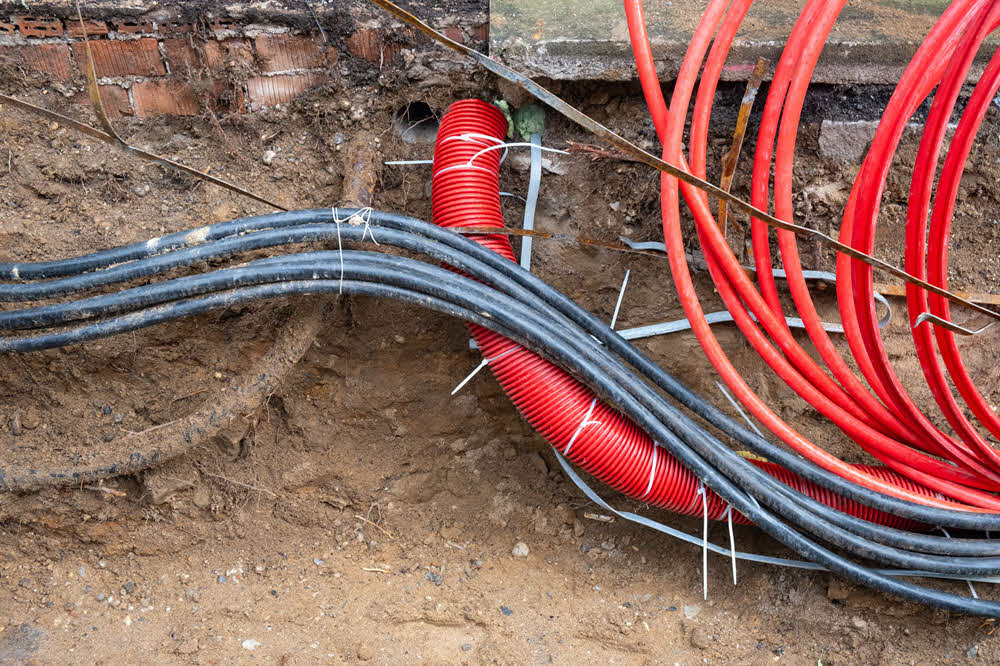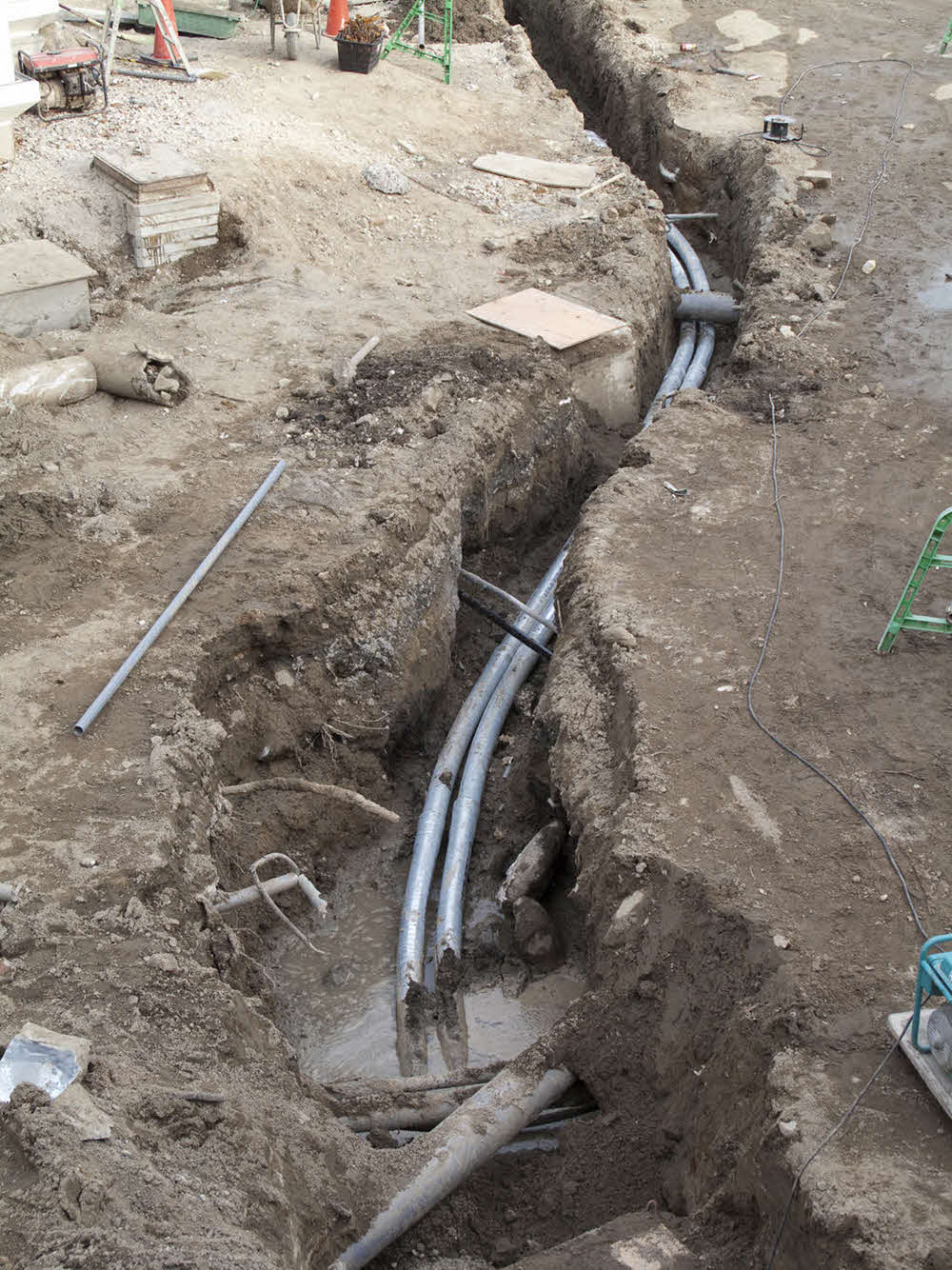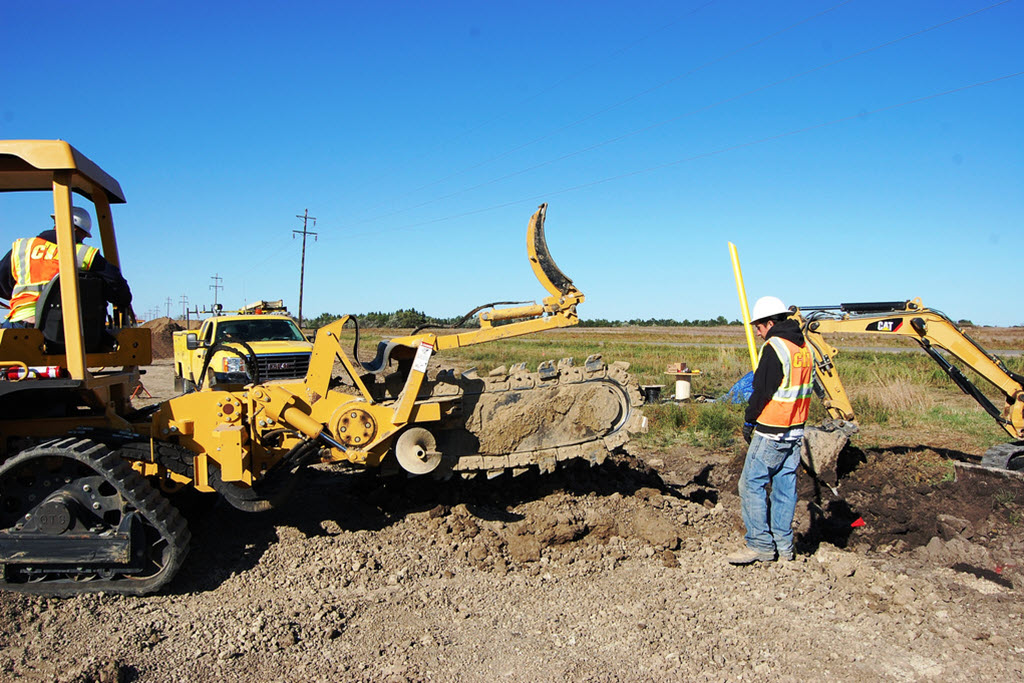Electrical Conduit Servicesin Oxford MI
Expert Conduit Installation to Support Electrical and Data Systems
We Are Locally Owned & Operated For Over 37 Years
Contact Us Today!
We Serve Businesses In And Around The Following Cities:
About Electrical Conduit Services
Introduction to Conduit for Electrical Underground
In the ever-expanding city of Oxford, development extends beyond the surface. A significant network of infrastructure operates beneath our feet, powering our commercial properties and enabling everyday business tasks to occur seamlessly. Central to this subterranean mechanism is the conduit for electrical underground – an unsung hero in our daily operations.
With advancements in underground conduit installation, businesses can now reap benefits such as improved safety, superior protection for wiring, and maintenance-friendly network design. Through our exploration, we will delve into the detailed process, benefits, and real-world applications of such conduit systems, paving the way to a renewed understanding of this integral component of commercial property infrastructure.
The Process of Installing PVC Conduit Underground
The process of installing PVC conduit for underground wiring or running an underground electrical service requires meticulous planning, expertise, and the right toolset. Start with a comprehensive site survey to accurately map the path for the proposed trench electrical line. This mapping not only mitigates the risk of damaging existing utilities but also ensures compliance with building codes.
The next step is trenching for electrical conduit. The crucial factor here is the depth of the trench. It is necessary to maintain a safe depth to protect the conduit from potential damage while satisfying regulatory standards. After trenching, the PVC conduit is laid securely within the trench, and electrical wires are run through the conduit.
Businesses in Oxford have seen a productive output from hiring professional services like D&J Contracting for this task, as their efficient and precise work ensures risk-free underground conduit installation at competitive prices.
Benefits of Conduit for Electrical Underground
Choosing a conduit for electrical underground in Oxford’s bustling commercial landscape extends beyond mere necessity. It delivers distinct advantages such as improved protection, flexibility, and ease of maintenance.
Firstly, running electrical lines within PVC conduit underground shields the wiring from moisture, soil pressure, and accidental damage during landscaping or construction activities. This enhanced protection significantly reduces the potential for electrical faults, ensuring a constant and reliable power supply to your commercial premises.
Furthermore, installing PVC conduit for underground wiring accommodates system updates or repairs with ease. If there is a need to upgrade wiring or include additional lines, the conduit system allows you to do so without disturbing the existing utility network, saving you both time and expense.
Oxford businesses have found working with a reputable company like D&J Contracting beneficial in achieving these advantages. Their efficient approach and technical proficiency ensure the installation is of high-quality and endurance to the test of time.
Real-World Applications in Oxford
One notable example of conduit for electrical underground application is the recent renovation of a historic commercial property in central Oxford. The century-old building required a major overhaul of its existing electrical system to cater to its adaptation into a modern office space. A well-planned PVC conduit underground installation was carried out, which facilitated easy upgrades and additions to the system, helped meet regulatory requirements and provided sufficient electrical supply to various sections of the building. On countless occasions, D&J Contracting has proven to be reliable partners with a reputation for maintaining quality and meeting timelines in challenging situations.
The Journey Ahead
Given the evident benefits, it’s hardly surprising that conduit for electrical underground is regarded as a wise investment for commercial properties in Oxford. This investment not only safeguards the electrical infrastructure but also future-proofs it from rapid technological advancements. One should prioritize collaborating with experienced service providers like D&J Contracting who, thanks to their experience and technical prowess, can guarantee the secure execution of the undertaking.
While it’s true that every commercial property has unique needs for its electrical network, it’s also undeniable that the advantages of an underground conduit system are universal. Whether you run a real estate business, tech startup, or a retail establishment in Oxford, you can count on a well-structured conduit system to power your enterprise, regardless of its scale or complexity.
Thus, as we continue to build and upgrade our cities, going underground might be the way forward.
Electrical Conduit Services Gallery


Call Us Today to receive your Free Quote for
Conduit For Electrical Underground in Oxford
Serving: Oxford, Michigan

About Oxford, Michigan
During the early 19th century the northeast Oakland County area was largely avoided by the early settlers because it was believed to be nothing but impenetrable swamp land. The area was, at that time, nicknamed “The Barren Plains of Oxford.” It was called this primarily because of a report made in 1812 by the U.S. Surveyor General that described the area as a poor, barren, sandy land, on which scarcely any vegetation could grow with the exception of some very small scrubby oaks. It was concluded in the surveyors’ report that there was one acre out of one hundred that appeared to be eligible for cultivation. Any hope for crop production was thought to be preposterous. At this point, the area was deemed worthless, and discouragement of any hope for development by forthcoming settlers was inevitable.
Purchase of public land in what is now called Oxford was in 1823 by a man named Elbridge G. Deming. Soon after, the first person to settle in Oxford was a wolf trapper named Avery Brown. He made use of the land and gave some credibility to its value. It wasn’t long after that the first area post office was officially established in what was then known as Demingsburgh on May 2, 1834. Five years later, the name was officially changed to Oxford on January 15, 1839. Elbridge D. Deming was the first postmaster for Oxford, as the post office was located in his log home near the intersection of M-24 and Metamora Road.
On November 30, 2021, a mass shooting occurred at Oxford High School. Four people were killed, and seven others were injured, including an injured teacher. School attendance was very low that day, as rumors had spread earlier that week of a shooting being about to occur. Most of the students escaped into a nearby Meijer. The suspect, a 15-year-old sophomore student, reportedly fired between 15 and 20 bullets in a chemistry room and did not resist arrest.
According to the United States Census Bureau, the village has a total area of 1.46 square miles (3.78 km), of which 1.26 square miles (3.26 km) is land and 0.20 square miles (0.52 km) (1.37%) is water.
| Census | Pop. | Note | %± |
|---|---|---|---|
| 1880 | 851 | — | |
| 1890 | 1,128 | 32.5% | |
| 1900 | 1,172 | 3.9% | |
| 1910 | 1,191 | 1.6% | |
| 1920 | 1,668 | 40.1% | |
| 1930 | 2,052 | 23.0% | |
| 1940 | 2,144 | 4.5% | |
| 1950 | 2,305 | 7.5% | |
| 1960 | 2,357 | 2.3% | |
| 1970 | 2,536 | 7.6% | |
| 1980 | 2,746 | 8.3% | |
| 1990 | 2,929 | 6.7% | |
| 2000 | 3,540 | 20.9% | |
| 2010 | 3,436 | −2.9% | |
| 2020 | 3,492 | 1.6% | |
| U.S. Decennial Census | |||
As of the census of 2010, there were 3,436 people, 1,335 households, and 889 families residing in the village. The population density was 2,748.8 inhabitants per square mile (1,061.3/km). There were 1,468 housing units at an average density of 1,174.4 per square mile (453.4/km). The racial makeup of the village was 95.1% White, 1.9% African American, 0.2% Native American, 0.7% Asian, 0.7% from other races, and 1.3% from two or more races. Hispanic or Latino of any race were 4.4% of the population.
There were 1,335 households, of which 33.0% had children under the age of 18 living with them, 51.5% were married couples living together, 10.6% had a female householder with no husband present, 4.6% had a male householder with no wife present, and 33.4% were non-families. 29.1% of all households were made up of individuals, and 6.6% had someone living alone who was 65 years of age or older. The average household size was 2.49 and the average family size was 3.09.
The median age in the village was 38.5 years. 25% of residents were under the age of 18; 8.4% were between the ages of 18 and 24; 27.5% were from 25 to 44; 28.9% were from 45 to 64; and 10.2% were 65 years of age or older. The gender makeup of the village was 49.3% male and 50.7% female.
As of the census of 2000, there were 3,540 people, 1,402 households, and 918 families residing in the village. The population density was 2,873.5 inhabitants per square mile (1,109.5/km). There were 1,476 housing units at an average density of 1,198.1 per square mile (462.6/km). The racial makeup of the village was 97.23% White, 0.59% African American, 0.28% Native American, 0.51% Asian, 0.31% from other races, and 1.05% from two or more races. Hispanic or Latino of any race were 2.66% of the population.
There were 1,402 households, out of which 35.6% had children under the age of 18 living with them, 53.4% were married couples living together, 9.4% had a female householder with no husband present, and 34.5% were non-families. 29.6% of all households were made up of individuals, and 7.2% had someone living alone who was 65 years of age or older. The average household size was 2.51 and the average family size was 3.15.
In the village, the population was spread out, with 28.2% under the age of 18, 8.1% from 18 to 24, 34.4% from 25 to 44, 21.2% from 45 to 64, and 8.2% who were 65 years of age or older. The median age was 34 years. For every 100 females, there were 96.6 males. For every 100 females age 18 and over, there were 93.7 males.
The median income for a household in the village was $53,885, and the median income for a family was $72,875. Males had a median income of $50,179 versus $29,938 for females. The per capita income for the village was $24,811. About 3.0% of families and 5.3% of the population were below the poverty line, including 6.1% of those under age 18 and 10.5% of those age 65 or over.
The village of Oxford is home to the school district of Oxford Community Schools. The district has nine schools which include:
- Two high schools (Oxford High School and Oxford Bridges High School, the latter an alternative school )
- One middle school (Oxford Middle School)
- Five elementary schools (Clear Lake, Daniel Axford, Lakeville, Leonard, and Oxford Elementary). All five elementary schools earned an A on their EducationYes! Report cards for the 2010–2011 school year.
- One adjudicated youth school (Crossroads for Youth)
The primary mascot for Oxford Schools is the Wildcat. Both the high school and the middle school have sports teams which are referred to as Oxford Wildcats. The Oxford Wildcat logo is visible around the town, prominently on one of the three water towers.
In 2009 and in 2010, Oxford Community Schools was featured as one of the “Best Schools In Michigan”. Two of the elementary schools Leonard Elementary and Lakeville Elementary both won Michigan Blue Ribbon Awards, making all Oxford elementary schools Michigan Blue Ribbon Schools. In the 2010–2011 year, Oxford High School moved from the Flint Metro League to the Oakland Activities Association.
Call Us Today to receive your Free Quote for
Conduit For Electrical Underground in Oxford
Related Services in Oxford, Michigan
We Serve Businesses In The Following Zip Codes:
48007, 48015, 48021, 48026, 48035, 48036, 48038, 48042, 48043, 48044, 48045, 48046, 48047, 48048, 48050, 48051, 48066, 48071, 48080, 48081, 48082, 48083, 48084, 48085, 48088, 48089, 48090, 48091, 48092, 48093, 48098, 48099, 48225, 48230, 48236, 48310, 48311, 48312, 48313, 48314, 48315, 48316, 48317, 48318, 48397